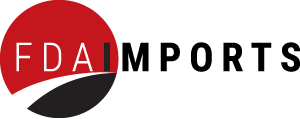
Globalization has brought U.S. consumers access to foods from around the world to satisfy any need or want, and as we’ve reported, food imports continue to surge. Increasing globalization has resulted in frameshifts in food production, including a transition from food supply chains to food supply webs; multiple-facility manufacturing of a single product, and vast, complex distribution networks. With the ever-increasing complexity of food production and distribution, compliance with applicable regulations and laws at each step of the production process can be difficult to achieve.
Food Allergies in the US
Furthermore, food allergies are on the rise. Increased food allergy prevalence is suggested by growing food-related anaphylaxis hospital admission rates; from 2000 to 2009, U.S. food anaphylaxis hospital admissions more than doubled for children 0–18 years old1. Additionally, there has been acceleration in childhood incidence of allergies to peanut, tree nuts and seafood (which are usually lifelong allergies)2. In 2004 Congress passed the Food Allergen Labeling and Consumer Protection Act (FALCPA), which mandated standardized food allergen labeling. This act both listed the 8 major allergens required to appear on U.S. food labeling (i.e., wheat, milk, eggs, soy, peanuts, tree nuts, fish, and Crustacean shellfish) and specified how allergen statements should be formatted. It goes without saying that proper food allergen labeling is not only a matter of labeling compliance but also essential for consumer safety and public health.
Allergen Labeling in a Globalized Food Supply
The increasingly branched supply web of food production leads to increased opportunity for food allergens to be incorporated into the U.S. food supply. Foreign food manufacturers have a greater choice of ingredients and suppliers than ever before, and allergen labeling becomes complicated when suppliers source ingredients that can be derived from multiple sources or a mix of sources.
For example, cost considerations may lead to one glucose syrup manufacturer relying on corn as a feedstock but another relying on wheat. A third manufacturer may purchase lots of grain depending on what is cost-efficient during that season and thus use both corn and wheat. A dessert manufacturer purchasing these syrups will need to label each finished product with the appropriate allergens, and the allergens could vary greatly.
Ingredient selection also occurs within the context of a country’s identity and policies. For example, gelatin is often beef-derived; however, in countries where a large portion of the population does not eat beef for cultural or religious reasons, gelatin producers may use fish as a feedstock. In order to comply with FALCPA, food manufacturers using fish gelatin in products that will be imported into the U.S. need to have allergen labeling while manufacturers using beef gelatin do not.
No matter what the reason behind the ingredients selected for a product, it is essential that the final product is labeled properly. Accordingly, each food manufacturer must determine the feedstock of their ingredients and determine whether allergen labeling is required, for both the public safety and the prevention of losses like costly recalls and damage to the company’s reputation.
FDAImports.com has professionals experienced in a wide variety of food-related topics. Contact us at contact@fdaimports.com for more information on how we can help you and your business achieve compliance with applicable laws and regulations.
_____________________________________________________________________________________
1Tang, M. L. K. and Mullins, R. J. (2017), Food allergy: is prevalence increasing?. Intern Med J, 47: 256–261. doi:10.1111/imj.13362
2Id.

